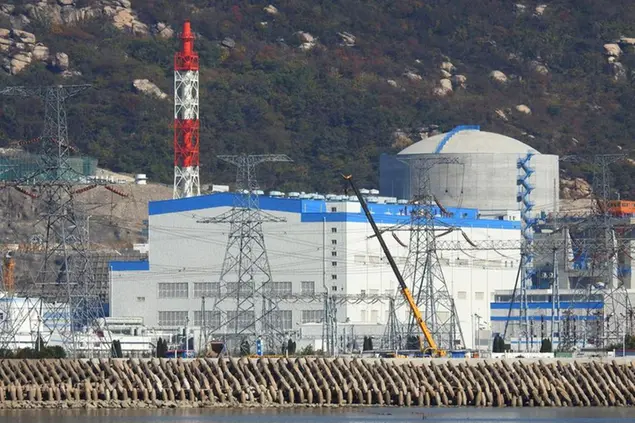PHOTO
(The opinions expressed here are those of the author, a columnist for Reuters.)
LITTLETON, Colorado - South Korea generated more electricity from nuclear reactors than from coal and natural gas for the first time during the opening half of 2024, and plans to add four more nuclear plants to its power fleet by 2038.
The heavy nuclear emphasis marks a key strategic shift by the world's third-largest buyer of liquefied natural gas (LNG) and fourth-largest importer of thermal coal, and may lead to reduced purchases of fossil fuels for power going forward.
South Korea's nuclear embrace also contrasts with power trends in Europe and North America, where utilities have retreated from nuclear recently but struggle to generate enough clean power from renewables alone to meet rising energy demand.
If South Korea's utilities can successfully meet the needs of its manufacturing-heavy economy through expanded nuclear output, the country may provide a viable blueprint to boosting clean power supplies without sole reliance on renewables.
TAILORED SOLUTION
Historically, coal and natural gas have been the main power sources fuelling South Korea's economy, with cheap and abundant energy vital for the country's cost-sensitive manufacturers of cars, chemicals and electronics.
An average of 68% of the country's electricity came from fossil fuels from 2010 to 2023, with roughly 40% from coal and 25% from natural gas, according to energy think tank Ember.
With little suitable land for hydro dams, solar parks and wind farms, the country's main source of clean generation has been nuclear plants, which have supplied roughly 28% of its electricity since 2010.
Renewables generation has jumped by over 150% since 2018, thanks mainly to a doubling in solar output. But the renewables share of electricity output remains under 6% and too small to make a meaningful impact on national power flows.
NUCLEAR FOUNDATION
To achieve emissions reduction goals - targeted as a 40% cut to greenhouse gases from 2018 levels by 2030 - the country has committed to reducing the burning of fossil fuels for power generation and industrial processes.
To avert any major drop in power output, authorities have outlined a major expansion in clean generation over the next 15 years, including a tripling in solar and wind output by 2030.
But the central pillar of South Korea's future power plans is its nuclear fleet, which is set to grow from 26 to 30 reactors by 2038.
In addition to roughly 4.4 gigawatts (GW) of new large-reactor nuclear capacity, there are plans for the country's first small modular reactor, with a capacity of 0.7 GW.
These planned increases come on top of two new reactors that began commercial operations this year, and helped drive South Korea's total nuclear-powered electricity output to a record over the past year.
GROWING EXPERTISE
South Korean nuclear firms are also busy overseas.
Korea Hydro & Nuclear Power (KHNP) won a contract from the Czech government this year to build two new reactors.
KHNP outbid France's EDF and other rivals to win the deal, which marked South Korea's first overseas order for a large reactor since 2009.
That has helped Korean firms establish themselves as global leaders in the nuclear construction space.
KHNP was also involved in the successful completion of the United Arab Emirates' first nuclear plant, the 5,600 MW-capacity Barakah project.
The last of Barakah's four reactors began commercial operations this month, within eight years "from first concrete pour to fuel load," said Mohamed Al Hammadi, chief executive of Emirates Nuclear energy Corporation at an event marking the occasion.
"The Barakah nuclear energy plant offers a new model for the world and demonstrates that nuclear energy is bankable and can be delivered efficiently."
Given the reports of years-long construction delays and billions of dollars in cost overruns at other nuclear projects, many energy developers will remain sceptical of nuclear's potential.
But if South Korean firms can build on their recent successes and help steer the country's clean energy supply levels steadily higher, international energy system planners are likely to take note.
(Reporting by Gavin Maguire; Editing by Stephen Coates)
